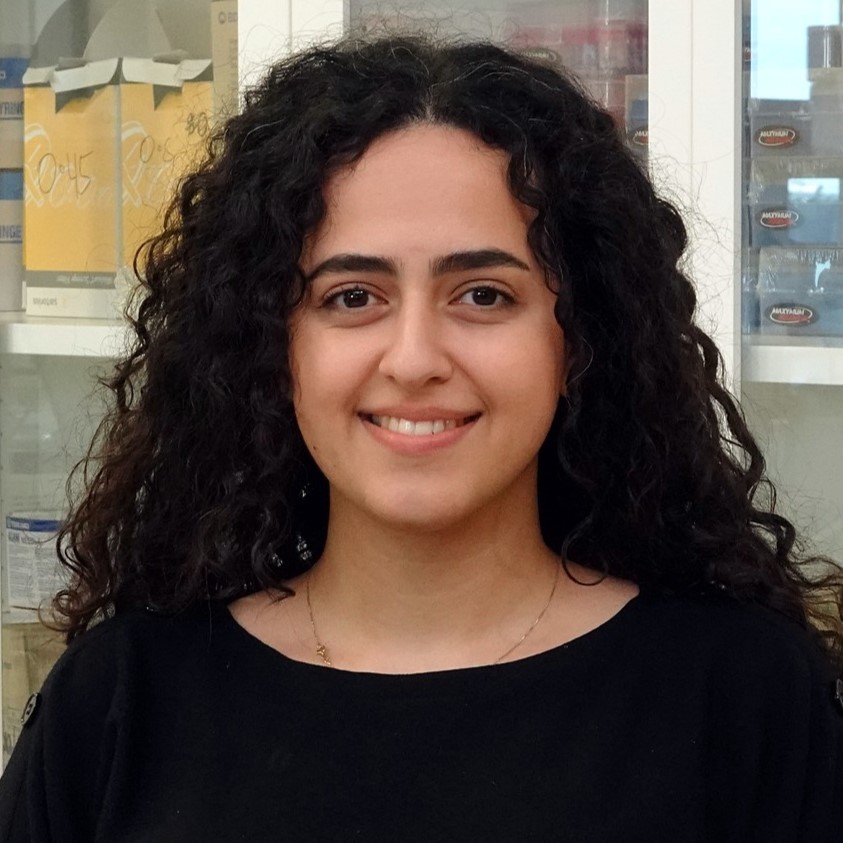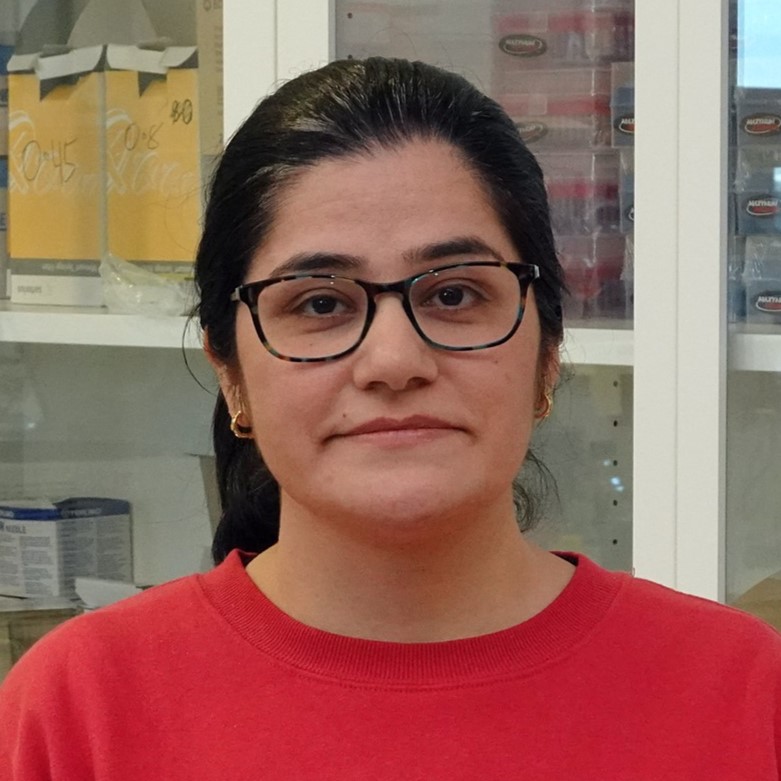Research Program Overview
Achieving the precise regulation of gene expression is fundamental in every aspect of biology, with dysregulation a hallmark of cancer. Our work looks at the role of non-coding RNAs in gene regulation and uses multiple cancer systems (such as breast cancer and melanoma) to examine what makes certain genes but not others subject to microRNA-regulation and how do we know what targets are of biological consequence? We seek to not only understand how non-coding RNAs function in cells, but how we might use them as therapeutic agents to simultaneously target entire oncogenic pathways. To achieve these goals, we typically combine “wet-bench” experimentation with bioinformatic analysis in order to examine not just individual genes of interest, but how these genes interact within complex networks. It is the interplay of different non-coding RNAs, different target genes and how these factors relate to each other which is essential to both understanding cancer progression and our capacity to intervene therapeutically.
Current Research Projects
- Developing small RNAs as a therapeutic strategy against oncogenic signalling
- Examining the capacity of microRNAs to target genes within protein-coding regions
- Understanding how microRNAs regulate complex genetic networks; the predominance of select strong targets vs the cumulative role of co-operative gene targeting
- Discerning functional small RNAs from the RNA degradome
- The role of Basonuclin-2 and other novel regulators of Epithelial-Mesenchymal Transition
Laboratory staff

Laboratory head
Team Members
Postdoctoral Research Scientists
Students
- Ms Laura Sourdin

- Mr Chi Yau Liu

- Ms Regina Belen Callanta

- Ms Saba Ataei Kachooei

- Ms Fakhira Nazki

Select Recent Publications
- Bracken CP, Goodall GJ. The many regulators of epithelial-mesenchymal transition. Nature Reviews Molecular and Cellular Biology. 2022. 23(2):89-90
- Migault M, Sapota, S, Bracken CP. Transcriptional and post-transcriptional control of epithelial-mesenchymal plasticity. Cellular and Molecular Life Science. 79(3):1-19
- Wajahat M, Bracken CP, Orang A. Emerging Functions for snoRNAs and snoRNA-Derived Fragments. International Journal of Molecular Science. 2021. 22(19):10193.
- Pham VVH, Liu L, Bracken CP, Goodall GJ, Li J, Le TD. Computational methods for cancer driver discovery: A survey. Theranostics. 2021. 11(11):5553
- Prompsy PB, Toubia J, Gearing LJ, Knight RL, Forster SC, Bracken CP, Gantier MP. Making use of transcription factor enrichment to identify functional microRNA-regulons. Computational and Structural Biotechnology Journal. 2021. 19:4896-4903.
- Pham VVH, Liu L, Bracken CP, Nguyen T, Goodall GJ, Li J, Le TD. pDriver : A novel method for unravelling personalised coding and miRNA cancer drivers. Bioinformatics. 2021. doi: 10.1093/bioinformatics/btab262.
- Pham VVH, Liu L, Bracken CP, Goodall GJ, Li J, Le TD. DriverGroup: a novel method for identifying driver gene groups. Bioinformatics. 2020. 36(Suppl_2):i583-i591
- Saunders K, Bert AG, Dredge BK, Toubia J, Gregory PA, Pillman KA, Goodall GJ, Bracken CP. Insufficiently complex unique-molecular identifiers (UMIs) distort small RNA sequencing. Scientific Reports. 2020. 10(1):14593.
- Pham VVH, Liu L, Bracken CP, Goodall GJ, Long Q, Li J, Le TD. CBNA: A control theory based method for identifying coding and non-coding cancer drivers. PLoS Computational Biology. 2019. 15(12):e1007538.
- Pillman KA, Scheer KG, Hackett-Jones E, Saunders K, Bert AG, Toubia J, Whitfield HJ, Sapkota S, Sourdin L, Pham H, Le TD, Cursons J, Davis MJ, Gregory PA, Goodall GJ, Bracken CP. Extensive transcriptional responses are co-ordinated by microRNAs as revealed by Exon-Intron Split Analysis. Nucleic Acids Research. 2019. 47(16):8606-8619.
- Pillman KA, Goodall GJ, Bracken CP, Gantier MP. miRNA length variation during macrophage stimulation confounds the interpretation of results: implications for miRNA quantification. RNA. 2019. 25(2):232-238.
- Cursons J, Pillman KA, Scheer KG, Gregory PA, Foroutan M, Zadeh SH, Toubia J, Crampin EJ, Goodall GJ, Bracken CP*, Davis MJ*. Combinatorial targeting by microRNAs co-ordinates post-transcriptional control of EMT. (*Joint corresponding author). Cell Systems. 2018. 7(1):77-91
- Pillman KA, Phillips CA, Roslan S, Toubia J, Dredge BK, Bert AG, Lumb R, Neumann DP, Li X, Conn SJ, Liu D, Bracken CP, Lawrence DM, Stylianou N, Schreiber AW, Tilley WD, Hollier BG, Khew-Goodall Y, Selth LA, Goodall GJ, Gregory PA(2018) miR-200/375 controls epithelial plasticity-associated alternative splicing by repressing the RNA-binding protein Quaking. EMBO J. 2018. 37(13). pii:e99016
- Narayan N, Bracken CP, Ekert PG. MicroRNA-155 expression and function in AML: An evolving paradigm. Experimental Hematology. 2018. 62:1-6.
- Nejad C, Pillman KA, Siddle KJ, Pépin G, Änkö ML, McCoy CE, Beilharz TH, Quintana-Murci L, Goodall GJ, Bracken CP, Gantier MP miR-222 isoforms are differentially regulated by type-I interferon RNA. 2018. 24(3):332-341.
- Siira SJ, Shearwood AJ, Bracken CP, Rackham O, Filipovska A. Defects in RNA metabolism in mitochondrial disease. International Journal of Biochemistry and Cell Biology. 2017. 85:106-113.
- Feng Y, Pillman KA, Neilsen CT, Toubia J, Lawrence, DM, Tsykin A, Gantier MP, Callen DF, Goodall GJand Bracken CP. Naturally existing isoforms of miR-222 have distinct functions. Nucleic Acids Research. 2017. 45(19):11371-85.
- Bracken CP, Scott HS, Goodall GJ. A network-biology perspective of microRNA function and dysfunction in cancer. Nature Reviews Genetics. 2016. 17(12):719-732.
- Bracken CP, Khew-Goodall Y, Goodall GJ. Network-based approaches to understand the roles of miR-200 and other microRNAs in cancer. Cancer Research. 2015. 75(13):2594-9
- Thomson DW, Pillman KA, Anderson ML, Lawrence DM, Toubia J, Goodall GJ, Bracken CP. Assessing the gene regulatory properties of Argonaute-bound small RNAs of diverse genomic origin. Nucleic Acids Research. 2015. 43(1):470-81.
- Yu F, Bracken CP, Pillman KA, Lawrence DM, Goodall GJ, Callen DF, Neilsen PM. p53 Represses the Oncogenic Sno-MiR-28 Derived from a SnoRNA. PLoS One. 2015. 10(6):e0129190.
- Cursons J, Leuchowius KJ, Waltham M, Tomaskovic-Crook E, Foroutan M, Bracken CP, Redfern A, Crampin EJ, Street I, Davis MJ, Thompson EW. Stimulus-dependent differences in signalling regulate epithelial-mesenchymal plasticity and change the effects of drugs in breast cancer cell lines. Cell Communication and Signalling. 2015.13:26.
- Bracken CP, Li X, Wright JA, Lawrence DM, Pillman KA, Salmanidis M, Anderson MA, Dredge BK, Gregory PA, Tsykin A, Neilsen C, Thomson DW, Bert AG, Leerberg JM, Yap AS, Jensen KB, Khew-Goodall Y, Goodall GJ. Genome-wide identification of miR-200 targets reveals a regulatory network controlling cell invasion. EMBO Journal. 2014. 33(18):2040-56.
- Li X, Roslan S, Johnstone CN, Wright JA, Bracken CP, Anderson M, Bert AG, Selth LA, Anderson RL, Goodall GJ, Gregory PA, Khew-Goodall Y. MiR-200 can repress breast cancer metastasis through ZEB1-independent but moesin-dependent pathways. Oncogene. 2014. 33(31):4077-88.
- Salmanidis M, Pillman KA, Goodall GJ, Bracken CP. Direct transcriptional regulation by nuclear microRNAs. International Journal of Biochemistry and Cell Biology. 2014. 54:304-11.
- Thomson DW, Bracken CP, Szubert JM, Goodall GJ. On measuring miRNAs after transient transfection of mimics or antisense inhibitors. PLoS One. 2013.8(1):e55214. 27. Neilsen PM, Noll JE, Mattiske S, Bracken CP, Gregory PA, Schulz RB, Lim SP, Kumar R, Suetani RJ, Goodall GJ, Callen DF. Mutant p53 drives invasion in breast tumors through up-regulation of miR-155. Oncogene. 2013. 32(24):2992-3000. 28. Neilsen CT, Goodall GJ, Bracken CP. IsomiRs--the overlooked repertoire in the dynamic microRNAome. Trends in Genetics. 2012. 28(11):544-9.
- Mercer TR, Neph S, Dinger ME, Crawford J, Smith MA, Shearwood AM, Haugen E, Bracken CP, Rackham O, Stamatoyannopoulos JA, Filipovska A, Mattick JS. The human mitochondrial transcriptome. Cell. 2011. 146(4):645-58.
- Thomson DW, Bracken CP, Goodall GJ. Experimental strategies for microRNA target identification. Nucleic Acids Research. 2011. 39(16):6845-53.
- Bracken CP, Szubert JM, Mercer TR, Dinger ME, Thomson DW, Mattick JS, Michael MZ, Goodall GJ. Global analysis of the mammalian RNA degradome reveals widespread miRNA-dependent and miRNA-independent endonucleolytic cleavage. Nucleic Acids Research. 2011. 39(13):5658-68.
- Gregory PA*, Bracken CP*, Smith E, Bert AG, Wright JA, Roslan S, Morris M, Wyatt L, Farshid G, Lim YY, Lindeman GJ, Shannon MF, Drew PA, Khew-Goodall Y, Goodall GJ. An autocrine TGF-beta/ZEB/miR-200 signaling network regulates establishment and maintenance of epithelial-mesenchymal transition. Molecular Biology of the Cell. 2011. 22(10):1686-98.
- Mercer TR, Dinger ME, Bracken CP, Kolle G, Szubert JM, Korbie DJ, Askarian-Amiri ME, Gardiner BB, Goodall GJ, Grimmond SM, Mattick JS. Regulated post-transcriptional RNA cleavage diversifies the eukaryotic transcriptome. Genome Research. 2010. 20(12):1639-50. 34. Bracken CP, Gregory PA, Khew-Goodall Y, Goodall GJ. The role of microRNAs in metastasis and epithelial-mesenchymal transition. Cellular and Molecular Life Science. 2009. 66(10):1682-99
- Bracken CP, Gregory PA, Kolesnikoff N, Bert AG, Wang J, Shannon MF, Goodall GJ. A double-negative feedback loop between ZEB1-SIP1 and the microRNA-200 family regulates epithelial-mesenchymal transition. Cancer Research. 2008 Oct 1;68(19):7846-54.
- Gregory PA, Bracken CP, Bert AG, Goodall GJ. MicroRNAs as regulators of epithelial-mesenchymal transition. Cell Cycle. 2008. 7(20):3112-8.




